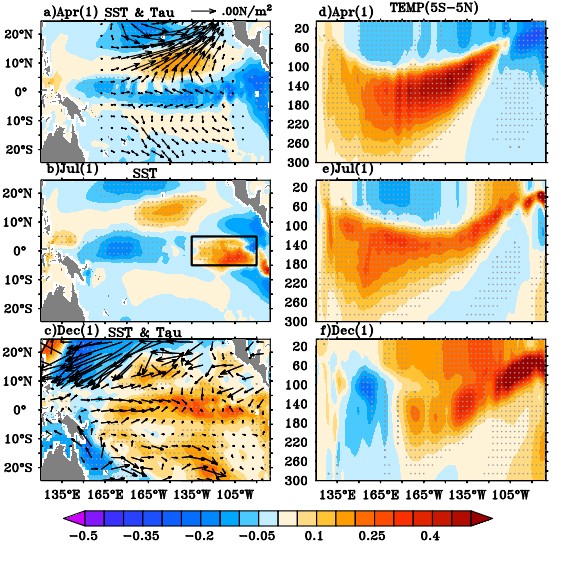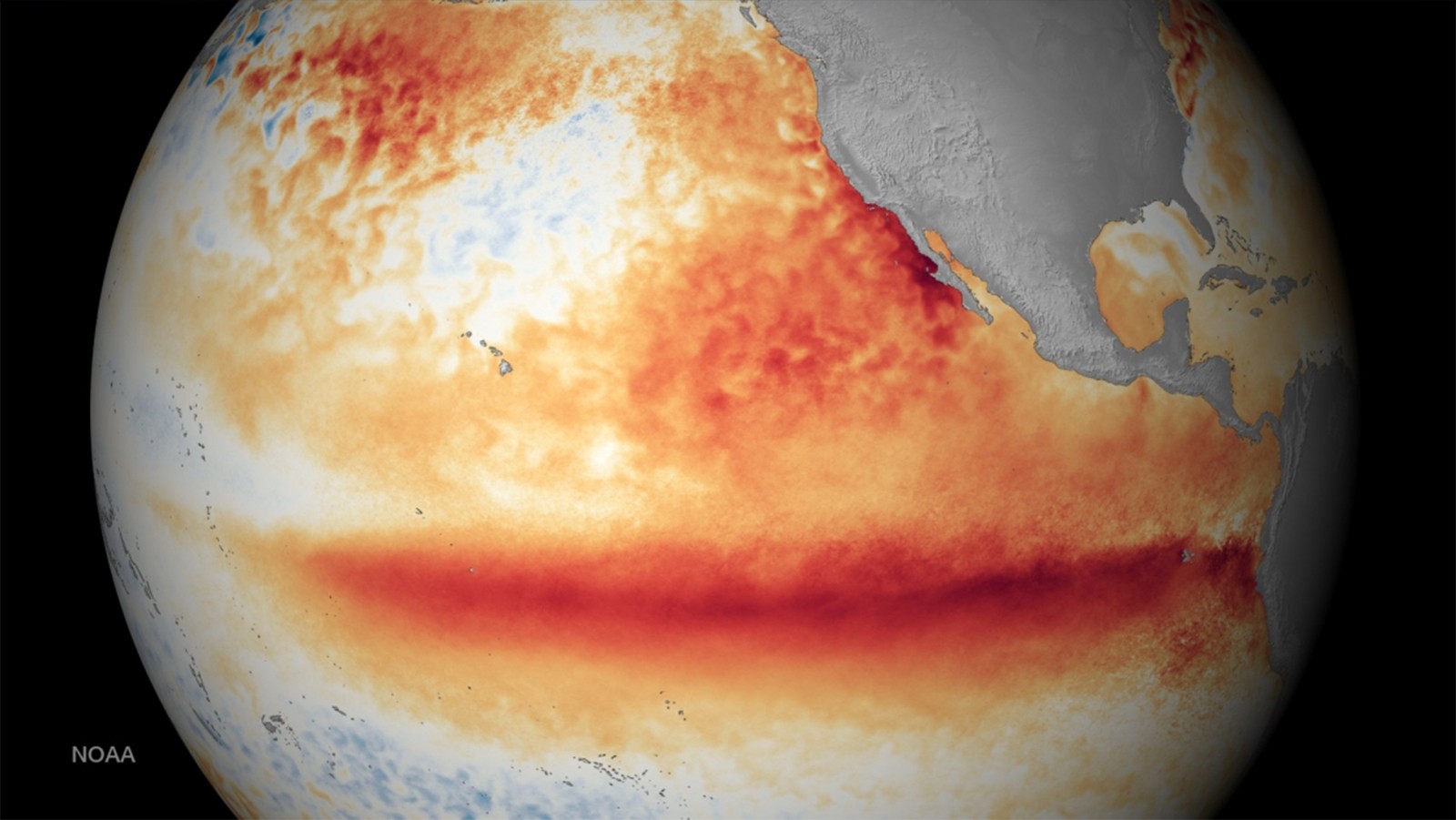In a new article published in the Journal of Climate, scientists at AOML and the Cooperative Institute for Marine and Atmospheric Science, with collaborators at Boston University, Texas A&M, and North Carolina State University, document the role of ocean dynamics in linking Pacific atmospheric variability to El Niño-Southern Oscillation (ENSO) event generation. The results of the study could be used as a potential predictor of ENSO events up to a year in advance.
The El Niño-Southern Oscillation (ENSO) is a recurring climate pattern that lasts between 2 and 7 years, which involves changes in the temperature of the waters in the central and eastern Pacific Ocean. The positive and negative phases of this oscillation cause the surface waters to warm or cool from 1 to 3-degrees Celsius compared to average surface temperatures. The oscillating warming pattern, or El Niño, and cooling pattern, or La Niña, directly affect rainfall patterns in the tropics, as well as strongly influence weather across the globe.
In this new study led by Soumi Chakravorty, PhD, a Cooperative Institute oceanographer at AOML, a series of numerical model experiments are used to examine how a reduction in the strength of the north Pacific east-to-west prevailing winds, known as the trade winds, in the winter can generate an El Niño event a year later.
The variation of strength in the north Pacific trade winds accumulates warm water in the off-equatorial central Pacific which in turn warms the equatorial Pacific. This mechanism is known as “trade wind charging.”
In this study, the model experiments show that trade wind charging consistently builds upper ocean heat content in the equatorial central Pacific in the spring through equatorward transport of warm water. This warm water is later transported eastward and upward along the sloped equatorial thermocline (a water layer in which water temperature decreases rapidly with increasing depth) and emerges in the summer as a warm surface temperature signal in the eastern equatorial Pacific. This surface warming is amplified by air-sea feedbacks, resulting in an El Niño event in the winter. Overall, the trade wind charging ‘‘primes’’ the equatorial Pacific for ENSO event development.

This study found trade wind charging was three times more likely to lead to strong El Niños than in an identical experiment without trade wind charging. These results are important because they shed light on how ocean dynamics driven by trade wind charging can serve as a potential predictor of ENSO up to one year in advance. Given the far-reaching impacts of ENSO on global weather and climate, improving the accuracy of ENSO predictions has been a long-standing goal in climate research. Better representation of the precursors of these events in coupled models can lead to improved prediction of ENSO and ultimately its impact on temperature, precipitation, droughts, tornadoes, and hurricanes.
